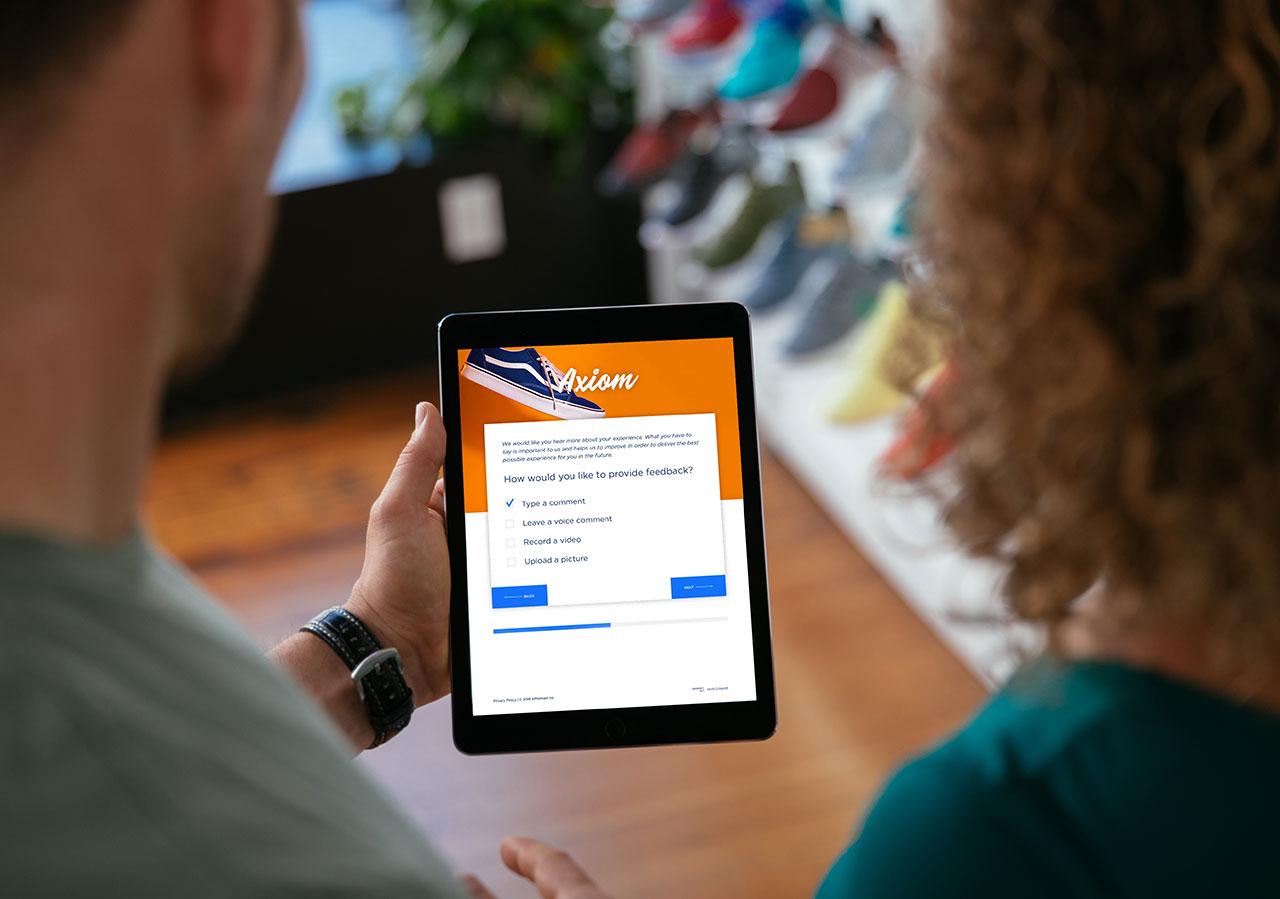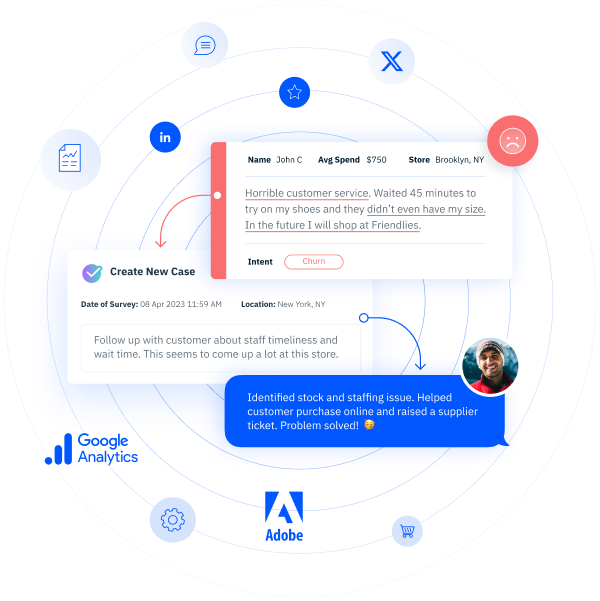Should Customer Surveys Be Tailored to Location? What To Know
Should you customize surveys based on location? Learn how regional preferences affect customer feedback and when a tailored approach makes sense.
Customer surveys are a mainstay in most consumer-facing industries for good reason. They provide powerful insights into customer sentiment, buying behavior, and much more, all for a relatively small investment.
One frequent topic of debate among multi-location businesses is how to set up a customer survey program. Should you use one survey across the entire business, or should you customize surveys to each location? And if you choose to customize, how much is too much?
Do Customer Surveys Need To Be Tailored to Location?
The short version is yes, customer surveys should be tailored to location. This is true for most multi-location businesses and certainly all businesses with consumer-facing units, like restaurant and retail chains.
Why? The biggest reason is because users’ experiences with your brand aren’t universal; they’re tailored to whichever location or locations the user interacted with. Whether you get a glowing review or a scathing one, most of the time those emotions aren’t directed at your brand in general as much as at the physical location where the customer had the experience.
By tailoring customer surveys to individual locations, large brands can more easily zoom into challenges at the location level.
Why Customer Surveys Should Be Location-Specific
We’ve already gone on the record here: We believe customer surveys should nearly always be location-specific. Let’s drill deeper into the reasons why.
Regional Preferences and Market Differences
First, customer expectations, purchasing behaviors, and service preferences vary by region.
There are countless examples of this, but let’s go with regional consumer trends. “Winter clothes” means one thing in Miami, Florida, and something entirely different in New England. The term may even have different connotations in Denver than in Seattle.
In this scenario, lumping all survey data from different regions and demographics into one giant vat of data obscures what’s really happening.
When a business doesn’t break up survey results by region, the data may suggest a product has mediocre performance when the reality is it’s massively popular in one region but less so elsewhere.
Improved Personalization
Location-specific surveys also allow businesses to customize and personalize at the location level. A brand may want to adjust its offerings, promotions, and messaging to align with regional customer needs or regional sales realities (such as an item that’s only available to U.S. customers or only those on the East Coast).
National businesses also frequently test new offerings in one or two distinct markets before rolling out nationally. Producing localized surveys allows brands to capture specific feedback on that new item or service without confusing customers who’ve never seen or heard of it.
By producing a more personalized survey, brands can enhance customer engagement and improve customer satisfaction with the survey itself. They can also follow up on localized results by making changes their target audience wants to see.
Actionable Insights and Targeted Improvements
Geographically segmented feedback is a key source of data, too. It enables more informed decision-making based on valuable insights found in region-specific information.
With this level of granularity, businesses can make strategic choices about how to refine the products, services, and experiences they offer based on the unique needs of different markets. For example, gauging regional performance of a buzzy or viral item can help businesses predict when and where that virality might spread.
Executive leaders, regional managers, and store managers can also benefit in unique ways from location-based survey reporting: With data broken down this way, leaders can quickly see and understand the data that’s most relevant to them.
Enhanced Performance Measurement
Analyzing survey data by location also gives businesses more granular insight into performance at multiple levels, from brand-wide to regional and all the way down to the individual store level.
This level of analysis gives businesses deeper insight and greater flexibility, enabling them to compare customer satisfaction (CSAT) levels across different regions and customer base segments and identify areas for improvement.
Local Regulations and Compliance
Businesses engaging in different types of surveys in multiple regions have one more reason to customize their customer surveys, and it’s a big one: regulatory compliance.
Surveys (especially digital surveys) selling to customers in some regions must comply with digital data privacy laws that may limit what kinds of information they can collect. For example, if you sell to customers in California or the European Union, you’re obligated to comply with the California Consumer Privacy Act (CCPA) or the EU’s General Data Protection Regulation (GDPR).
An otherwise effective survey question might be a regulatory violation in those jurisdictions.
Best Practices for Creating Location-Specific Surveys
We hope by this point you’re convinced that location-specific surveys are the right approach for your business. But for most brands, execution may be a challenge.
Follow these best practices to get the most possible out of your location-specific surveys.
Analyze and Identify Regional Cohorts
Proper survey methodology requires asking similar questions across all surveys so that you’re confident your metrics are all equivalent or comparable. Asking completely different sets of questions in different regions won’t allow you to (correctly) use all that data in a comparative way.
So step one in creating effective location-specific surveys is something called cohort analysis: identifying and then grouping audience members that share a specific trait (in this case, region or location).
Once you’ve made this identification, you can start identifying regional differences in responses that can inform what kinds of adjustments you make to questions.
Adapt Survey Content for Each Cohort
It’s essential to keep questions similar, but regional differences do exist. Often you do need to adjust survey questions to fit specific regional cohorts.
This is a balancing act: you want to keep your survey as stable as possible so that you’re still comparing apples to apples, even when wording changes. But sometimes the wording must change if you want to capture regionally accurate responses.
To ensure relevance, accuracy, and positive customer experiences, consider each of these areas.
- Language & cultural sensitivity: Questions (especially when translated) need to reflect local dialects and cultural norms to avoid misinterpretation and offense.
- Regional preferences & trends: Questions may need to be adjusted to fit the most popular or relevant products or services in an area.
- Regulatory considerations: Questions must comply with local laws and data protection requirements, even if that means weakening some questions or omitting others entirely.
- Product/service availability: Questions need to make sense based on the services, pricing, or customer experiences available in a region or at a location.
Active listening is another way to navigate adapting survey content. Pearl-Plaza’s new AI-powered Active Listening Agents enable surveys to start with the same question but then (for open-text questions) dynamically prompt respondents for more contextual feedback based on the initial response. This is a powerful way to glean detail-rich insights while keeping the top-level methodology and structure of your survey intact.
One more tip: To avoid skewed response rates, keep the survey delivery method the same across all locations.
Keep Core Metrics Consistent While Adapting Certain Questions
Even though the wording and content of your survey questions changes in different locations, the core data you’re collecting should stay as consistent as possible.
Keeping a consistent set of key performance indicators (KPIs) across all locations helps you understand performance across the organization. You just might have to use different approaches to get that information, based on regional differences in customer expectations and behaviors.
Leverage AI and Automation To Streamline Survey Customization
AI-driven survey tools can help brands scale their customer survey processes in powerful ways. For example, some tools can automatically translate customer surveys into one or more additional languages. Some tools can even personalize questions based on regional data and optimize survey distribution for different geographic audiences.
Pearl-Plaza is a powerful solution for customer feedback, market research, conversational surveys that allow for open-ended question types, and much more. Our fully Integrated CX platform helps you understand audiences, gauge customer experience, and understand sentiment in conversational text.
Test Localized Versions Before Full-Scale Implementation
AI and automation are key tactics for scaling your customer survey customization. But no matter how human or how cyborg your customizations are, you still need QA, and it’s still a good idea to test them on a small scale before launching widely.
Pilot testing your brand’s localized surveys can help you identify potentially embarrassing, damaging, or just plain confusing issues related to wording, cultural relevance, or semantic clarity. This approach gives you the chance to solve these problems before they roll out to thousands or millions of inboxes.
Analyze Location-Based Survey Data To Refine Strategies Over Time
It will take time and iteration to perfect your customer feedback surveys, and it’s okay if your first crack at survey design isn’t perfect. You’ll still benefit by using the survey responses you’ve collected to keep refining your approach to numerous aspects of your business. For example, you can use survey results to adjust your marketing strategies and how you approach customer support and customer experience.
You can even use the customer data you’ve collected to identify weak or unclear points in your customer satisfaction surveys, which you can keep refining over time.
Deliver Personalized Surveys and Uncover Meaningful Customer Insights With Pearl-Plaza
Personalized, location-specific surveys can reveal granular insights that are both powerful and actionable. But it can be a significant technical and logistical challenge to execute the shift from uniform, undifferentiated questionnaires to truly customized location-based surveys.
Pearl-Plaza is a different kind of survey software, a fully Integrated CX approach that helps brands ask the right questions of the right types of customers. With Pearl-Plaza, brands can collect and connect feedback across the entire customer journey, then use Conversational Intelligence to understand and extract insights from that feedback.
See what Pearl-Plaza can do for your brand: Schedule a demo





